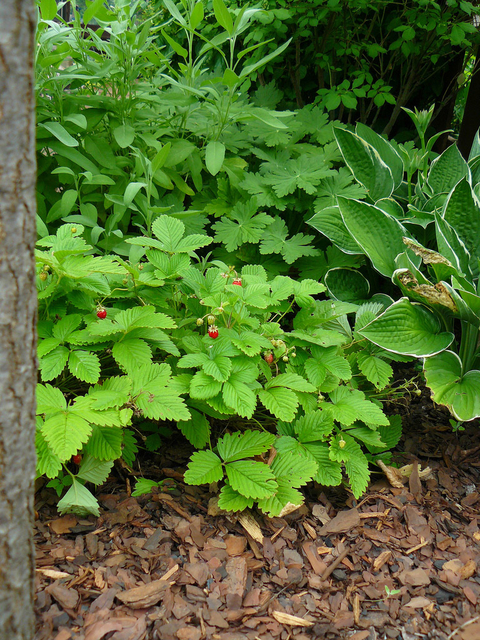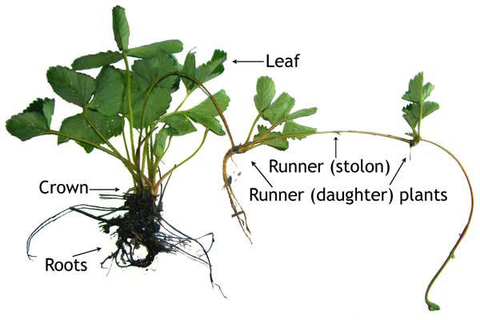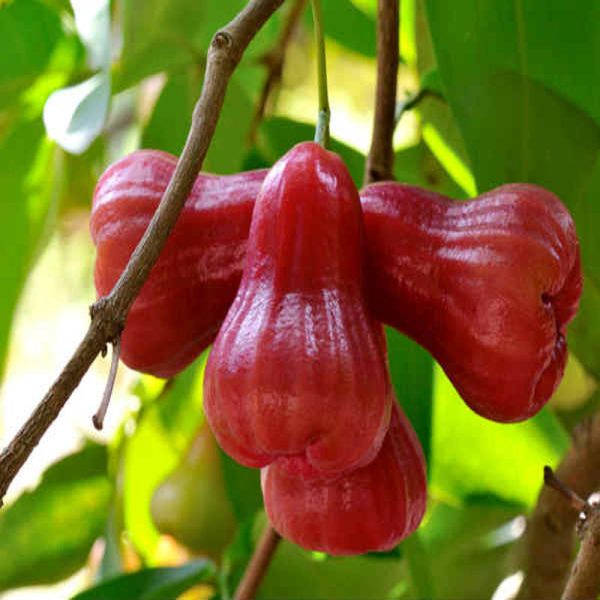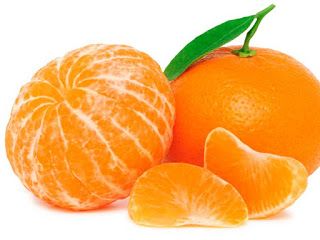Growing strawberries in the home garden
Quick facts
- Strawberries need full sun to produce maximum fruit.
- Space plants 12 to 18 inches apart.
- Strawberries are self-fertile, but require bees for pollination.
- Remove some of the runners throughout the season or your strawberry plants will take over your yard.
- After removing flowers for a few weeks after planting, you can pick fruit later that summer.
- One June-bearing plant can produce up to 120 new daughter plants in one season.
Types of strawberries
There are three types of strawberries available to the home gardener.
- June-bearing strawberries produce a large, concentrated crop in mid-June to early July.
- Ever-bearing types produce two crops, one in early summer and the second in early fall.
- Day neutral plants produce fruit throughout most of the growing season.
Of the three types, June-bearing strawberries normally produce the largest yield per season, but in a short period of time.
Strawberry plants usually begin flowering in mid-May in southern Minnesota. For June-bearing varieties it takes about four weeks from plants flowering to picking fruit.
Day neutral and ever-bearing types begin flowering around the same time in the spring and take about the same time between flowering and harvest. The difference is that they keep flowering through the summer months.
In addition to leaves, flowers and fruit, a strawberry plant has a crown, roots, runners and produces daughter plants.
The woodland strawberry
The woodland strawberry (Fragaria vesca) is a day neutral strawberry species. You might also see it called alpine strawberry, fraises des bois, wild strawberry or European strawberry. The plants produce small, sweet fruit with maybe two to three berries per plant per week.
Because many of these plants are grown from seed, the plants can either produce runners or not. They tolerate shadier sites and can be planted in the front of perennial beds, walkways or in containers.
Follow this calendar to keep strawberries healthy and productive
| What to do | When to do it |
|---|---|
| Rake straw away as plants start to grow, leaving a little straw to protect them | April |
| Plant dormant transplants | April, May |
| Plant potted transplants | May, June |
| Pinch flower buds off transplants for a few weeks | May |
| Thin June-bearing plants within two weeks after harvest | July |
| Apply compost to day neutral plants if needed | July, August |
| Remove runners from June-bearing plants as needed | July through October |
| Cover plants with straw mulch if overwintering | November |
Choosing strawberry plants
Many strawberry varieties are available and can be grown with ease in home gardens. Some taste better than others. Some are more winter hardy than others. Some ripen in one small window in June, while others produce fruit throughout the growing season.
Planting and caring for young plants
Strawberries require sun to produce fruit. Ten or more hours of sunlight each day is ideal,but they need a minimum of six hours of direct sunlight each day.
Before planting, a soil test will help you find out if you need to add any nutrients to your soil.
It’s a good idea to work some well-rotted compost into the soil before planting. Compost helps add nutrients to the soil, improves drainage and increases microbial activity, all of which will benefit the plants.
How to keep strawberries healthy and productive
Managing pests and disorders
Gardeners need to be able to identify pests and the damage that they cause in order to choose the best way to manage them.
You can find additional help identifying common pest problems by using the online diagnostic tools What insect is this? and What’s wrong with my plant? or by sending a sample to the UMN Plant Disease Diagnostic Clinic.
For detailed management strategies for specific insects and diseases see Pest management for the home strawberry patch.
Diseases of strawberries
Strawberries are susceptible to fruit rots and leaf diseases. Fungi causing fruit rots infect the flowers and fruit as early as bloom time. Leaf diseases often have little effect on plant growth.
To keep fungi to a minimum:
- Plant in full sun.
- Keep plants from being crowded.
- Water early in the day to reduce the amount of water on the flowers and fruit.
- Use straw mulch under the plants.






















Reviews
There are no reviews yet.